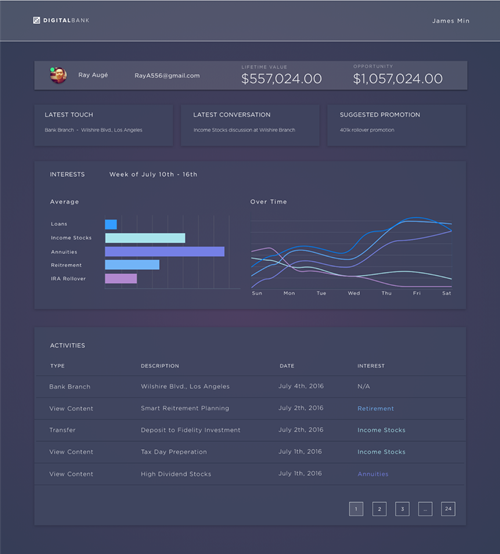Liferay Takes Direct Aim at the Digital Experience Market
Historically known as portal software, Liferay has tilted into the digital experience market with its new DXP - Digital Experience Platform.
 This shift isn’t exactly off course for Liferay. It’s more like a natural evolution. According to Bryan Cheung, Liferay CEO, their customers were continually asking for things that were not part of a traditional portal implementation, and Liferay would build or integrate them, so it only made sense to re-evaluate their place in the market.
This shift isn’t exactly off course for Liferay. It’s more like a natural evolution. According to Bryan Cheung, Liferay CEO, their customers were continually asking for things that were not part of a traditional portal implementation, and Liferay would build or integrate them, so it only made sense to re-evaluate their place in the market.
Cheung said they looked at the Liferay portfolio and talked with analysts. What they found was that they were already slowly evolving towards Digital Experience Management. But Liferay had some unique angles that other digital experience platforms didn’t necessarily have.
For starters, thanks to its portal heritage, Liferay has deep integrations with many backend business systems. It also is the backbone for many customer portals, so it understands the customer experience intimately. This gives Liferay the ability to help organizations build better relationships across the entire customer lifecycle, not just the acquisition phase.
What’s in Liferay DXP
So how does it work? Liferay DXP is made up of a few different components. The foundation is the portal platform itself. There are built-in integrations with a number of backend systems including CRM, ERP, support, and other systems. The platform then uses a microservices approach to add capabilities as a customer needs them.
Cheung said that deep digital transformation means organizations need to change the way their business runs. Liferay DXP goes deep into business processes and helps customers design systems and integrations to be modular, allowing them to re-deploy or reconfigure business services as necessary.
What this infrastructure enables customers to do is to build a range of customer experience solutions including web experiences, mobile experiences, or hybrid online/offline experiences across the entire customer lifecycle. Even new innovation interfaces using React or Angular are supported. These experiences include the marketing website for prospects, customer website (where the customer is logged into the site), to advocate (inside the customer portal, or support system).
Liferay DXP offers the ability to create websites and landing pages, mobile websites, native mobile app, forms and more. You can create targeted experiences based on audiences or personas and personalize experiences for marketing, customer support and service, and so on.
Two components of the Liferay DXP: Campaign Manager and Single View of Customer (SVOC) are not released yet (Cheung said they would be released later this year), but they are available as part of the DXP Platform. SVOC pulls together all the profile information into a single location so it can be used to personalize the experience and, Campaign Manager enables marketers to target users and move them through a process which, I assume, is a marketing campaign or some other process such as customer support or service.
Here is the example of how a bank teller displays a singular customer view. As you may see below, in one page, a bank teller can see relevant, current information, such as the latest conversation between the customer and the bank (wherever it might have been), pulled from multiple systems across the organization. Based on this customer view, the teller can make intelligent suggestions to the customer, giving the bank an opportunity to cross/up-sell.

A New Approach to the Customer Portal
Cheung spoke about helping customers take existing traditional customer portals from cost centers to an opportunity to engage, provide self-service, engender loyalty, and repeat purchases through all customer interactions.
Another interesting area that Cheung talked about is giving customers the ability to manage their customer data more ethically. Cheung believes the end-customer should have some control over how their data is used and that companies need the tools to handle customer data securely and sensitively.
Liferay DXP is available as a subscription service, or as a hybrid solution with components such as Campaign Manager and SVOC deployed on the Cloud. Cheung said Liferay is also looking to offer managed services at some point in the future.
The Complete Customer Experience
Liferay is moving in a good direction. The ability to support customers across the entire customer lifecycle, within the realm of marketing (who is taking on more responsibility for the complete customer experience) is something many digital experience vendors aren’t talking about.
Most vendors focus on customer acquisition or customer support/service. Having much of this in one place takes away the need to connect disparate systems to get a better view of the customer. It’s not that it can’t be done, but for many organizations, one solution that can be built up in components as they figure out how the organization needs to transform its processes and systems may be the smart choice.

Barb Mosher Zinck
Barb Mosher Zinck is a content marketer, marketing technology analyst. She spends her days learning how to build better customer experiences through content, translating what she’s learned into actionable strategies for her clients and practical guidance for her magazine audience.